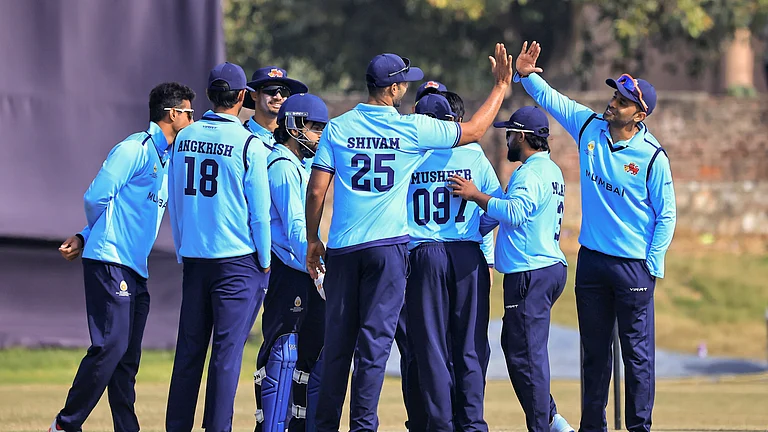The 16th state of the Union of India, one of the seven sister-states of the North-East, Nagaland, lies on the Naga Hills, which rise from the Brahmaputra valley. Also known as the falcon capital of the world due to its primary roosting site of the Amur Falcon, Nagaland is a finely woven tapestry of natural beauty, and human habitation, so ancient that its origins are untraceable. The 17 tribes of Nagaland are spread across 16 administrative districts, and each tribe has its own specially patterned handloom textile, jewellery, and ceremonial headgear.
The Naga are experts at weaving shawls on the loin loom or the shuttle loom especially the Naga women. During the agricultural off-season, many turn to weaving at the loin loom, the three pieces of a shawl stitched together. Naga women are expected to learn to weave. They predominantly use yarn dyed red or black (depending on the viscosity of the dye, it could be a very dark blue also) and rarely has stripes of other colours mixed in. Cotton and wool are the favoured yarns; however, these are all store-bought, since growing cotton has almost ceased in the state, along with spinning the thread for the weaving.

Each tribe weaves as per the patterns and motifs vital to it. Each type of shawl is heavy with meaning and purpose. These usually depict the epitome of a human trait, a designation or profession, an honour bestowed, or an entitlement received. However, in the non-Naga world, the most famous shawls are the warrior shawls. All shawls are woven per strict rules regarding motifs, pattern uniformity, colour codes, etc. A deviation from the rules is said to bring ill luck upon the wearer.
The Ao tribe has a distinctive shawl, the tsungkotepsu. It has a dark base, with a horizontal white stripe, with black, red, and white bands on its sides. On the other hand, is the rongsu. This shawl, a densely-patterned weave, can only be worn by a man whose grandfather, father, or himself has offered a sacrifice of the Mithun, now the state animal of Nagaland.
The chuchusubangsu shawl of the Mulir tribe, on the other hand, is worn by their men as a right. Thin blue bands run on either side of a white band embroidered with a red lozenge-shaped motif, and all bands are across a red base. The blue bands indicate the number of heads that the wearer has taken heads in war and also offered a feast of merit.
Shawls of two tribes, Chakhesang and Angami, are similar to each other since the Chakhesang are Eastern Angami. The khonoma, a shawl with a spear motif, can only be worn by the warrior men of the Chakhesang tribe.

The loukaisa shawls, woven and worn exclusively by women, are colourful and very popular. Then there is the shatni shawl of the Konyak tribal woman, which she wears on her wedding day and then is draped in it when she passes on. While red is the colour of the shawls for men, a young Naga woman’s shawl must not be red, as it is believed to bring her a violent death. Therefore, red will be seen only on women who are advanced in age.
The motifs on the woven fabric are usually embroidered but can also be painted-on. The sami lami phee, is an excellent example of embroidery on Naga shawls. These are Angami Naga shawls and are gifted to warriors by the leader, and usually have forest animals embroidered on a dark base. The Lotha, Ao, and Rengma tribes paint on the shawls created by their women. The paintwork is done exclusively by the older men of the tribes, and they create the motifs freehand.
Natural-born artists, the Naga people have been bestowed with the best of both nature and skills, and yet, the handloom, and arts and crafts sector, are hurting for want of investment and direction. For the weavers, good quality yarn is difficult to acquire either due to unavailability or high rates, leading to the financial instability of the craftsmen, as expensive raw materials lead to high-priced goods which may not retail well. For now, the unique handloom products of Nagaland occupy pride of place in the homes, offices, and galleries of a select few.





















